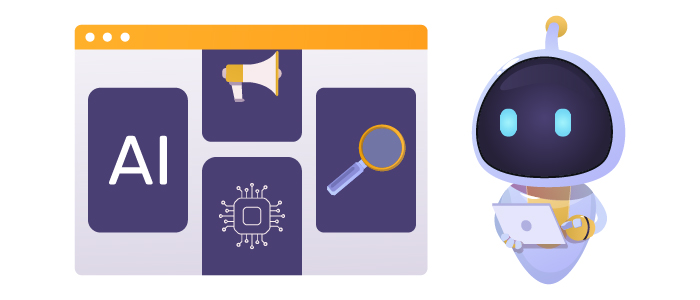Top 5 Personalization Marketing Trends for 2024
Technology has made a tremendous contribution to improving marketing. Still, consumer behavior is the concept that pushes marketers and their efforts to new heights, challenging businesses to find new and better ways to engage with their audience and keep their customers loyal.
If customers’ preferences and purchase behavior would stay the same, we would not look for those strategies that help us get and stay closer to them. However, just like in any other situation, people change, and their expectations do, too. And how would we increase sales if not by meeting their expectations?
So, to keep customers close, we always go back to the one concept that helps us the most: marketing personalization. To stay up to date, we decided to discuss the most popular personalization marketing trends you might want to consider in 2024.
About Marketing Personalization
Marketing personalization is a strategy widely used that implies tailoring your marketing efforts according to data gathered from customers in various ways. Do you remember the good old cookies? They help marketers understand customers’ behavior, and gathering third-party (3P) data through cookies can contribute to shaping a personalized marketing strategy.
To have a better view, you can imagine that marketing personalization is like when you want to surprise a close friend with a gift, and instead of saying, ”I think you would like this,” you say, “I know you like this.”
This also happens with businesses. A company moves from basing its marketing strategy on “thinking” to basing it on “knowing,” and this can lead to a better, stronger, and longer relationship with its customers.
And as much as some may believe that customers don’t want their privacy “invaded” by businesses, they are far from the truth. According to research conducted by McKinsey in 2023, 71% of consumers “expect companies to deliver personalized interactions.” Furthermore, 76% actually get frustrated when this doesn’t happen.
So, it’s not wrong to gather data about your customers these days. Instead, it is highly recommended, and users actually expect you to do this. However, the important thing is how you gather that data and what you use it for. And this is what we will discuss in this article.
1. AI-Driven Personalization

Currently, it is crystal clear that AI (Artificial Intelligence) is stealing the spotlight, and this is also valid for personalization marketing trends. And let’s admit that it is entitled to do so. Marketers just have to find the best ways to work with this concept so that it helps them improve their customers’ experience.
Considering the rapid progress of AI, the next year will challenge companies to use it to their advantage. The good thing is AI can significantly improve personalization in marketing.
Take product recommendations, for example. Using AI can lead to recommending those products that users are most likely to purchase. E-commerce giant Amazon did this through Amazon Personalize, aiming to decrease cart abandonment by recommending products truly relevant to their customers.
You can go even further with AI. For instance, if you develop an e-commerce website for groceries, you can use AI and ML (Machine Learning) to add relevant products to your users’ carts. It seems hard to achieve, but it works.
Everyone sticks to the usuals when buying groceries, such as bread, milk, eggs, tomatoes, rice, chicken breast, and more. There are some basic products that every user purchases regularly. AI can learn how often you purchase bread, for example, and automatically add it to your cart when starting your shopping session.
Furthermore, besides the usual, users may also want to try out some new things. And AI can recommend those according to buying behavior. So, if you usually buy potatoes, AI might recommend sweet potatoes.
It is not science fiction; some businesses, like e-grocer Misfits Market, have already implemented this concept. The platform adds such recommendations to your cart, along with the classics, and you can then keep or erase them in checkout.
The final result? A better customer experience, less time spent asking yourself what you should buy this time, and new things to try out when you get bored of the usual dishes you cook. Furthermore, you will be sure that the company you buy from knows you and understands your needs and wishes, and you will go back to that company multiple times, as it will continue to make your life easier and better. It is a win-win situation.
2. Privacy-Conscious Personalization? Zero-Party Data!

We did say that customers expect you to offer personalized recommendations and experiences. However, they are reluctant to offer their data in just any way.
When working on your marketing personalization strategy, you have to focus on your customers’ privacy. Nobody wants personalized recommendations and offers if they were developed based on information that they were not entirely aware they were providing.
Major companies such as Apple and Firefox have already started blocking third-party data, and many others will follow them, including Google. The US, Europe, and other major economies have started working on various penalties for those violating data privacy regulations.
All you have to do is care for your customers’ privacy. Users start getting increasingly concerned about how their data is used online and who has access to it. This makes the whole personalization concept a tricky situation, as customers want to receive personalized offers and recommendations, but they do not want their privacy to be affected.
However, there is a way to gather data about your customers without them feeling attacked, and it is called zero-party data.
Basically, zero-party (0P) data is more specific than other types of data, as it comes directly from users and is offered voluntarily and deliberately.
Zero-party data is the closest you can get to your customers, and such information brings many benefits to the table. First, your customers will feel valued and notice that their feedback is taken into consideration. Then, it can help companies gain the information they need to improve customers’ experiences.
But most importantly, zero-party data protects consumers’ privacy, and this is the one thing that everyone should be looking for, as we mentioned earlier.
How to Collect Zero-Party Data?
Zero-party data is not that hard to collect, after all. Although it seems harder to reach than third-party data, for instance, you will be willing to gather it once you learn how valuable it is.
One of the most effective ways of gaining 0P data is to add a pop-up that appears when users access your website. You can then offer a discount code for those answering some questions.
For instance, let’s say you have a pet shop and want to personalize offers for pet owners. John has 2 cats, and Mary has a dog. Why would John want to receive dog offers and Mary get cat recommendations? There is no point, right? So, you develop that pop-up and kindly ask users to select product preferences. They can select one or more options from various types of animals, such as cats, dogs, fish, hamsters, birds, and more.
This way, users get a discount they can use for their 1st order, and you get data you can then use to personalize marketing for them. You can go even further and ask dog owners what type of food they prefer. This way, you can let them know when there is an offer for that food and try to recommend similar products (same flavor, same age and weight, and many more).
Then, why not try to develop a quiz? There is no user who does not like to answer questions about themselves. It’s like you, the company, ask them how they are. So, try to learn more about your customers. Let’s say you have an online shop for phone cases. Ask users what materials they prefer, what phone they have, and whether there is a specific brand that they prefer. This way, you will be able to recommend iPhone cases for iPhone users and not iPhone cases for Samsung owners.
3. Build the Strongest Community Possible

There is nothing better than feeling that you belong. Whether it’s your family or a community, the feeling of belonging is more important than you think. This is why, in 2024, one of the top personalization marketing trends revolves around businesses building engaged communities and keeping them close.
By building a community, brands can get to know their customers better, using the insights they get from users to personalize their marketing efforts. Furthermore, basing research on your community can even lead to a lower advertising budget. Communicating with your community can result in direct-to-consumer revenue, eliminating the need for tremendous advertising budgets.
So, you can start focusing on your community and its engagement. You can offer community members some perks to keep them close, but keep in mind that the offers should match their preferences if you aim to rock that personalization marketing strategy.
Furthermore, try to raise your community, as this will offer you more long-term clients. And we all know that it is easier to maintain customer loyalty than to acquire new customers.
4. Remember Mobile

Optimizing for mobile is something that you have heard a lot in the last few years. Yet again, mobile is one of the top personalization marketing trends that you really need to pay attention to.
Why?
As of 2023, over 55% of web traffic comes from mobile devices. According to Exploding Topics, 9 out of 10 users access the internet from their mobile phones. This is big and means that you have to focus on personalizing mobile experiences.
Considering that mobile devices are widely used nowadays, users expect to find everything they would find on desktop versions, personalized recommendations included. Notifications, in-app rewards, and recommendations, everything can be used to your advantage.
There is a major benefit when it comes to mobile. Users have their phones wherever they go; thus, they can see notifications wherever they are, while on desktops, it’s a little harder to be up to date with all the notifications you receive.
So, you can use customer data to build push notifications recommending relevant products for each user. Try to also offer them personalized rewards, and always focus on letting them know when a product is on sale.
5. Go for Personalized Rewards

Believe it or not, rewards are effective, and that’s why we must include them in our top 5 personalization marketing trends. But not just in any way.
According to Insider Intelligence, 61% of consumers say they would join a loyalty program if the rewards were applied automatically. Furthermore, 55% would join such a program if there were personalized rewards. If these stats speak to you, too, it is time to start offering personalized rewards.
If you’re wondering how to come up with personalized rewards, your customers and their purchases are the answer again. Based on recent purchase history, you can tailor rewards that will actually convince customers to use them.
If Bob recently purchased a laptop, you could offer him a personalized offer for a cleaning product for the screen. This will be significantly better than offering him a discount for socks, right?
Final Thoughts
Marketing changes so much from one year to another, and it is impossible to keep your strategy the same, as users’ preferences and behavior change, too. So, every year, you have to look for new trends and adapt your marketing strategy to recent updates.
In recent years, marketing personalization has become so popular that it cannot be left behind. Marketers have to include this concept in their marketing strategy, as users always expect to receive personalized content, offers, recommendations, and rewards.
So, if you are looking for the best personalization marketing trends, try to focus on AI-driven personalization, personalized mobile push notifications, building an engaged community, and offering personalized rewards based on recent purchase history.
Each effort you make to personalize your marketing strategy will lead to lower advertising budgets and increased direct-to-consumer revenue. Furthermore, you will improve 1:1 marketing, which will benefit both your company and its customers.